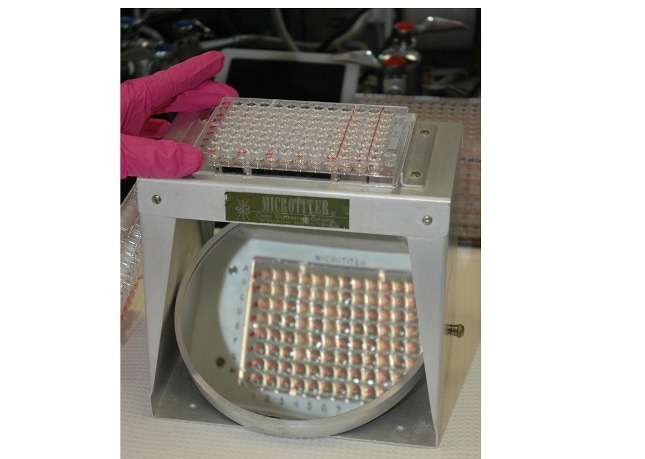Moving porcine sapelovirus up on the SHIC Swine Disease Matrix will bring to light the impact PSV central nervous system disease is having on the U.S. swine herd.
December 20, 2017

Source: American Association of Swine Veterinarians
With increasing reports of porcine sapelovirus from veterinary diagnostic labs, along with anecdotal evidence from practitioners and producers, as evidence, the Swine Health Information Center revised the priority of the virus on the Swine Disease Matrix from an average risk score of 1.0 in May 2017 to a score of 4.0 in December 2017. The SHIC Monitoring and Analysis Working Group agreed PSV should be rated like its other enterovirus cousins on the Matrix which serves as a watch list for current disease conditions domestically and globally. SHIC is actively monitoring disease conditions and responding to evolving concerns with the goal of protecting the health of the U.S. swine herd.
Bailey Arruda, assistant professor and diagnostic pathologist at the Iowa State University Veterinary Diagnostic Lab, says, “Diagnoses of viral poliomyelitis appear to be increasing in frequency, especially compared to past decades per conversations with diagnosticians and practitioners. Porcine sapelovirus is detected with some frequency in the central nervous system tissue of pigs with atypical neurologic signs and non-suppurative poliomyelitis in cases submitted from broad geographical areas to the ISU Veterinary Diagnostic Lab.”
SHIC monitoring of CNS disease syndromes and other sources of information have resulted in the following clinical observations about cases.
• Reported group morbidity has ranged from 1 to 10%; commonly 3 to 4%
• Case-fatality rate approaches 100%, based on herd history
• Pigs affected are usually 4 to 12 weeks of age, but the syndrome may extend into finishers
• Clinical signs in individual pigs include CNS symptoms, hind leg weakness and/or alertness and awareness but lateral recumbency with inability to rise
• Common progression includes lack of response to treatment and eventual humane euthanization
• Practitioners may see a high recurrence rate in subsequent groups of newly placed pigs
• Clinical syndrome movement spanning weeks in groups of pigs has been reported
Although diagnostic lab data provides some information concerning what is occurring in the field, it might not be a true representation of clinical disease in the field if affected farms do not submit samples due to previous diagnoses or awareness that this syndrome might have a unique etiology. Recurrence of the disease on affected farms remains a key concern. PSV has been detected in CNS tissues submitted to veterinary diagnostic labs from farms across the Midwest and Southeast.
Moving PSV up on the SHIC Swine Disease Matrix will bring to light the impact PSV CNS disease is having on the U.S. swine herd, in Arruda’s opinion, and begin the process to provide the prevention and mitigation protocols and tools producers need to avoid economic loss and welfare issues.
Basic research, field investigations, animal inoculation studies and diagnostic assay development to more fully investigate PSV may result. Questions include:
• Prevalence of PSV in feces in the U.S. swine herd on affected and non-affected farms
• Seroprevalence of PSV in the U.S. swine herd and seroprevalence of PSV in affected versus non-affected flows
• Age distribution of fecal shedding and serum antibodies and the correlation between these and the development of PSV CNS disease
• Antigenic and genomic differences between PSV fecal and CNS strains
• Virulence variation and risk factors between PSV fecal versus CNS strains
Funded by America’s pork producers to protect and enhance the health of the U.S. swine herd, the Swine Health Information Center focuses its efforts on prevention, preparedness and response.
For more information, visit the SHIC website or contact Paul Sundberg.
You May Also Like



